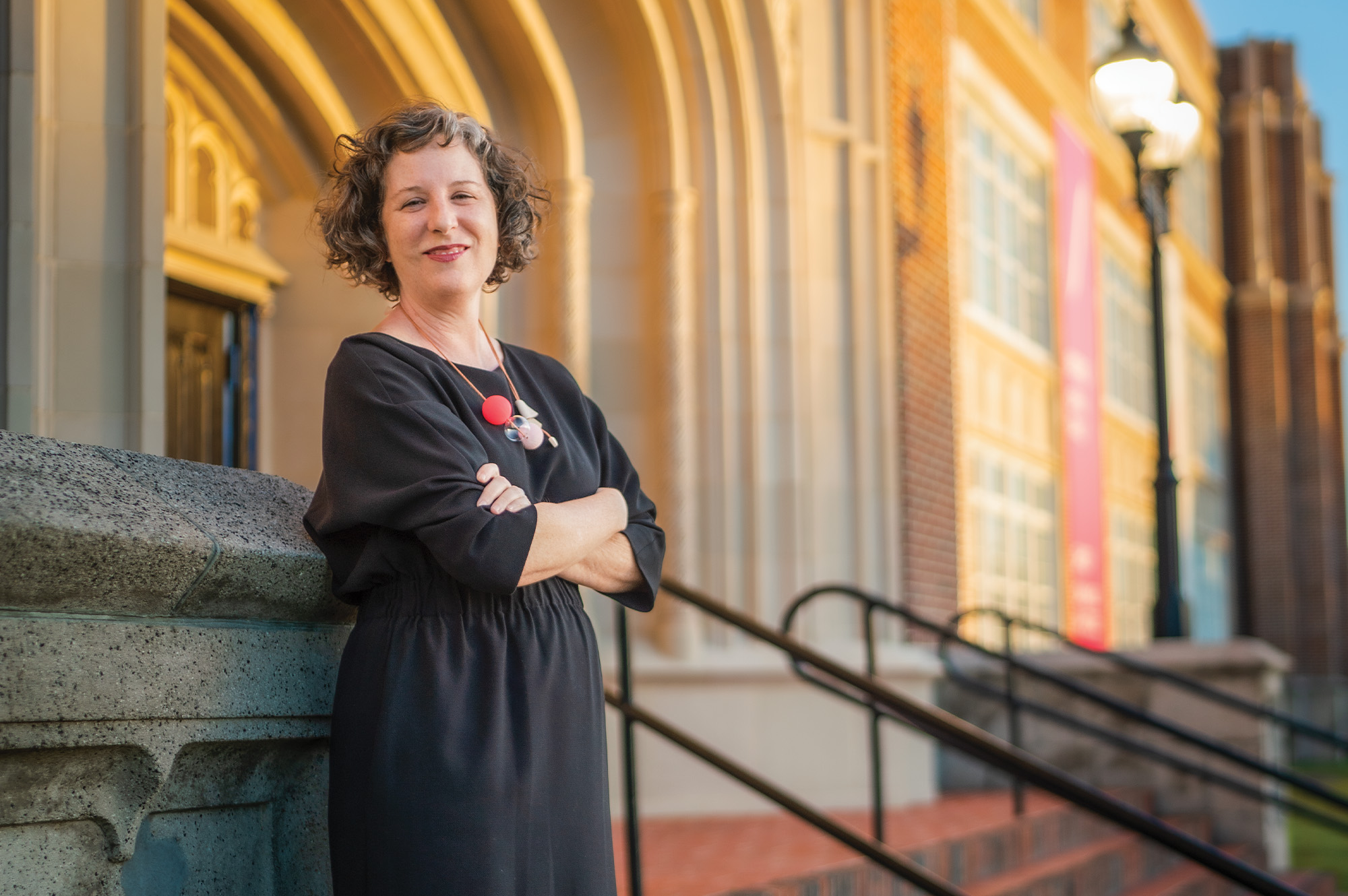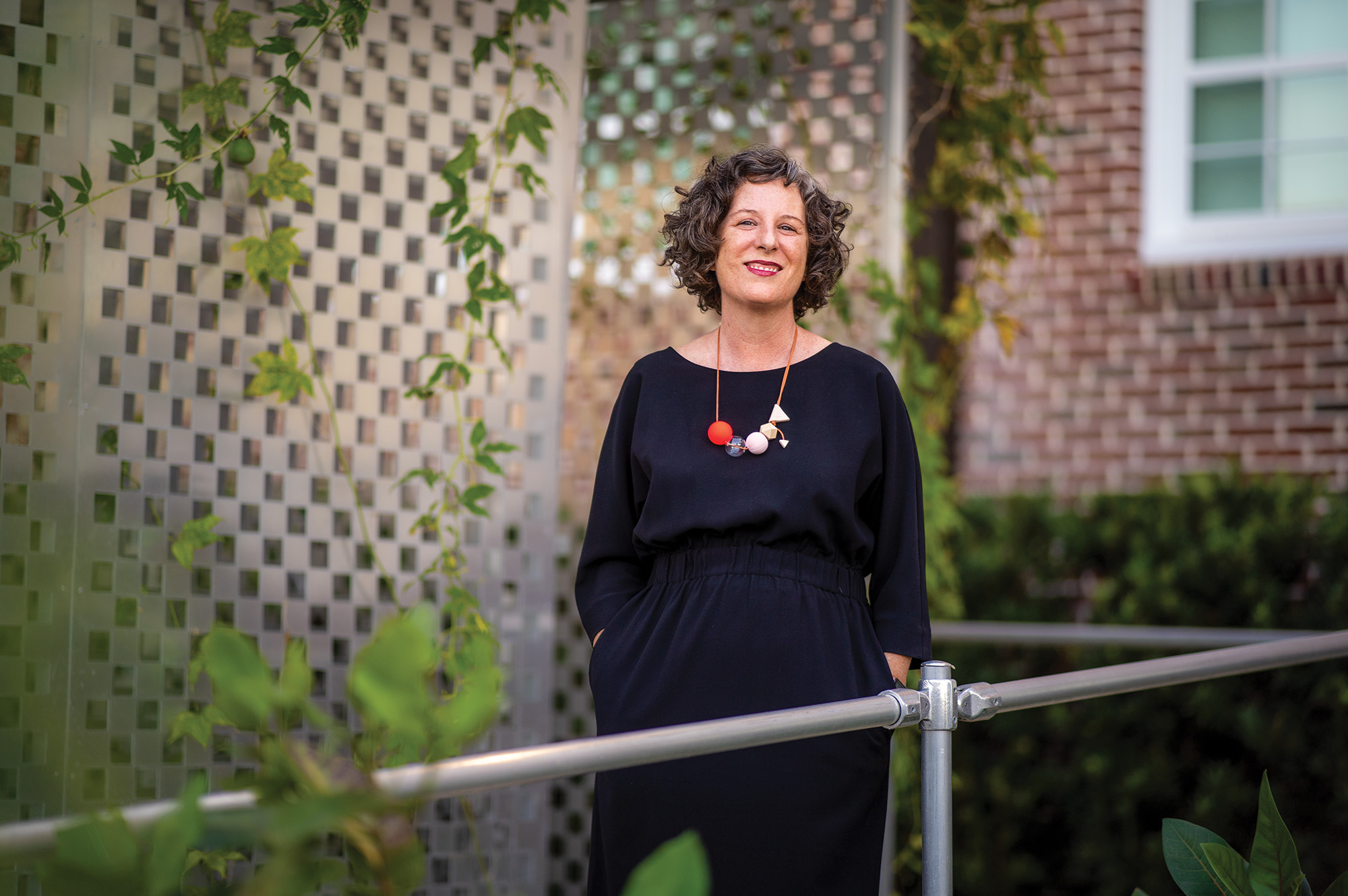Head down to Sarasota Art Museum these days and it’s a veritable hive of activity. From the atypical career retrospective on painter Judith Linhares, to seeing the artist curate a mini-exhibition within her own show as a tribute to the artists who have inspired and pushed her— to the launch of two new exhibition series—In Focus, highlighting and celebrating a single work of art at a time, and In The Making, which dedicates space for emerging artists—Sarasota’s newest museum seems determined to stake its claim as a top arts institution in a crowded field. “This is a jewel box,” says Virginia Shearer, who joined Sarasota Art Museum as executive director in early 2021. “And we need to figure out how to crack it open for everyone.”

THE HISTORIC, RENOVATED BUILDING OF THE SARASOTA ART MUSEUM GLOWS BRIGHT AT GOLDEN HOUR FOR SHEARER.
SRQ: What makes an exhibition right for Sarasota Art Museum? How do you balance entertaining and educating?
Virginia Shearer: What’s really special about Sarasota Art Museum is that it’s founded on the premise that contemporary art is changing, evolving of this moment that we all live in, but it is also about our collective lived-in human experience and our collective consciousness. We want to capture that by making sure that we always have an exhibition that has a message or theme that resonates for the moment we’re in. We’re looking for artists who have a purpose. They’re putting their passion and their work behind a message that they want to convey. And we’re interested in bringing those messages to light. But we are also always thinking about diversity of material and diversity among artists. I’m also interested in exhibitions where we can have multiple artists work in dialogue. And that hasn’t really happened here at Sarasota Art Museum. I want to move toward more large scale group exhibitions.
SRQ: How would you describe the current voice of the museum and where do you want it to be?
Shearer: We’ve created a kind of academic type institution. And scholarship is incredibly important and has to be the bedrock of everything we do. What we need to do is really hold tight to our roots, but also lean more into the balance of being a community museum.That’s where playfulness comes in. We have a fresh perspective, a fresh voice, and we fill a niche here in Sarasota that is about what’s new, what’s next, the pulse of what contemporary artists are thinking. But we have to really push harder in making our voice more welcoming, playful and, dare I say, even fun.
SRQ: Why is playfulness important in a museum?
Shearer: Because people learn when they’re having fun. The best way to learn is when you get lost and you lose time, because the pursuit that you’re working in is so consuming that you lose track. And that’s where you start to really become even more creative and learn even more. We want our experience to be something that helps to engage people in that flow. It’s where learning is seamless.
SRQ: How do you achieve that?
Shearer: We’re looking at integrating more participatory experiences. In April, we’ll be opening a major group exhibition called State of the Art 2020: Constructs. And that exhibition will have performance art, video art, installation art, paintings, sculpture. And the idea is if we can get more work that invites participation and interactivity in the galleries. It’ll just kind of amp up the experience. People will move out of the, “We need to just walk along and behave in a certain way.”
SRQ: Star Wars or Star Trek?
Shearer: Star Wars. Every day. In fact, I have a t-shirt that says, “The Force is female.” My husband has one with Darth Vader that says, “I am your father.” One year I gave all the cousins and all the kids, Millennium Falcon crew t-shirts. I’m also obsessed with George Lucas and I can’t wait for the museum to open in LA.
SRQ: Is it the shared emphasis on the intersection between education and play?
Shearer: People just learn in different ways. When it comes to museums: for auditory learners, there’s the tour; for visual learners, there’s everything you can get out of just looking at the art. But you can also read. And for those people who like to intrinsically experience the world, you can walk around by yourself. For those people that are in a group, you can have these social events. The extrinsic learner and kinesthetic learners, you can participate in a dance class or do whatever. We have to be ready for them all because we’re all so diverse. And that’s how we will design programs. That’s a piece that I’m going to bring to the equation here that wasn’t quite in place.
SRQ: What do you imagine the museum of the future will be like?
Shearer: Museums are always, always, always going to be an important part of our lives. Humans are endlessly fascinating, and what we make is that residue from our lives. And other humans are interested in that residue, what came before. And there is nothing like the real thing. I very much believe that where the magic happens is between us and original works of art. A lot of artists have said this beautifully: a work of art is never complete until the viewer is actually there before the work of art and making it whole. And I believe that.









